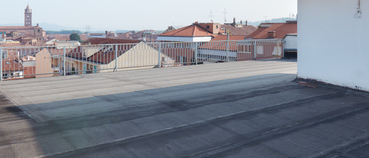Built up roof membrane gravel surfaced membrane and gravel only 0 33.
Gravel surfaced built up roof.
Cellulose blown attic 3 8.
This acts as an adhesive when it cools.
1 gallon of roofing cement.
National roofing contractors association.
A built up roof for example will typically include the built up membrane itself with or without gravel as well as some kind of insulation and cover board which will vary in thickness from roof to roof.
National roofing contractors association.
Cellulose insulation manufacturers association.
Here alternating layers of roofing felt usually fiberglass and hot applied asphalt are combined to create a long lasting roof system.
When it comes to estimating the weight of an existing roof field verification of the in place construction is necessary.
You can choose the number of layers or plies that are installed.
Built up systems are installed by alternating layers of asphalt or tar and supporting fabrics directly onto the roof.
If you have a home with a flat roof a tar and gravel roof may be a good option for you.
Tar and gravel roofing tar and gravel roofs sometimes referred to as conventional built up roofing or bur roofs tar and gravel roofing is a system of flat roofing protection that is budget friendly and can have a lifespan of up to 30 years.
For over 100 years.
Photo of an aggregate surfaced bur.
In order to make the proper repairs a few materials are needed.
Aggregate surfacing has been applied to built up roof systems for over a century.
Gravel to protect built up roofs a built up roof bur sometimes called a tar and gravel roof is a tried and true style of flat roof.
Built up roof membrane smooth surfaced membrane only 0 24.
Pea gravel crushed rock and decorative rock white quartz are often dispersed into a flood coat of hot asphalt and applied over the top of the roof membrane.
This photo shows a split in a gravel surfaced built up roof that was causing some severe interior damage.
National roofing contractors association.
Built up roofing systems have been in use in the u s.
These roof systems are commonly referred to as tar and gravel roofs.
The aggregate which typically consists of gravel crushed rock or blast furnace slag is set in a uniform bitumen flood coat over the membrane surface.
A rubber glove to spread the roofing cement.

